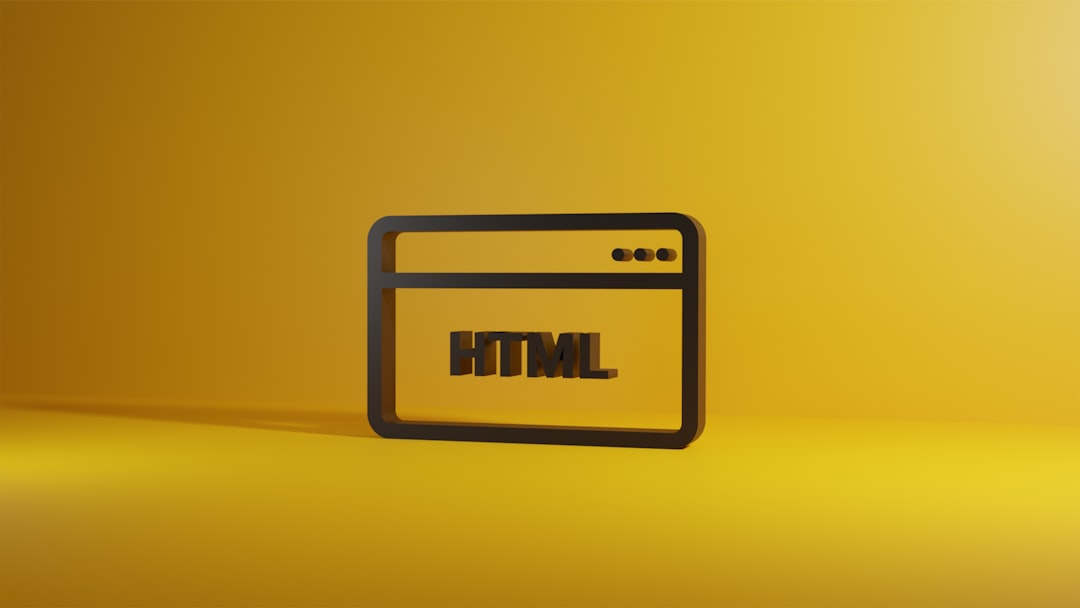Support our educational content for free when you purchase through links on our site. Learn more
How Old is 3D Printing? Discover 15 Fascinating Facts [2024] 🕰️
Have you ever wondered how long 3D printing has been around and how it has transformed industries? 🤔 Well, you’re in for a treat! In this article, we’ll take you on a journey through time, exploring 15 captivating facts that reveal the rich history and evolution of 3D printing. From its inception in the 1980s to its current status as a game-changing technology, you’ll learn how this innovative process has impacted everything from aerospace to healthcare.
But wait, did you know that the first 3D printed object was created over 40 years ago? Imagine the possibilities that have unfolded since then! As we dive deeper, we’ll uncover how 3D printing has not only changed the way we manufacture but also how we think about design, customization, and sustainability. So grab your favorite drink and let’s get started on this fascinating exploration of 3D printing’s age!
Key Takeaways
- 3D printing originated in the mid-1980s with Chuck Hull’s invention of stereolithography.
- The first commercial 3D printer was released in 1988, revolutionizing prototyping.
- Today, 3D printing is widely used across various industries, including aerospace, healthcare, and automotive.
- Advantages include rapid prototyping, increased customization, and reduced waste.
- Disadvantages involve high initial costs and limited material options.
If you’re ready to jump into the world of 3D printing, don’t forget to check out our recommended links for 3D printers and printing materials! Happy printing! 🎉
Table of Contents
- Quick Tips and Facts about 3D Printing Age
- The Evolution of 3D Printing: A Journey Through Time
- Key Milestones in the History of 3D Printing
- How 3D Printing Works: The Technology Behind the Magic
- Types of 3D Printing Technologies: Which One’s Right for You?
- Application Areas of 3D Printing: Where It’s Making Waves
- Advantages of 3D Printing: Why It’s a Game Changer
- Disadvantages of 3D Printing: What You Should Know
- Future Trends in 3D Printing: What Lies Ahead?
- Conclusion: The Age of 3D Printing
- Recommended Links for 3D Printing Enthusiasts
- FAQ: Your Burning Questions about 3D Printing Answered
- Reference Links: Dive Deeper into 3D Printing
Quick Tips and Facts about 3D Printing Age 🤔
Are you curious about the age of 3D printing? 🤔 Let’s dive into some quick tips and facts about the history of 3D printing.
- 3D printing predates the internet: It was invented in the mid-1980s by Chuck Hull with the creation of the stereolithography process. [1]
- The first 3D printing patent was filed in 1984: Chuck Hull filed a patent for his stereolithography process, which was later granted in 1986. [2]
- The first commercial 3D printer was released in 1988: The SLA-1 was the first commercial 3D printer, released by 3D Systems. [3]
- 3D printing has been used in various industries: From aerospace to healthcare, 3D printing has been used to create prototypes, models, and even final products. [4]
The Evolution of 3D Printing: A Journey Through Time 🕰️
The evolution of 3D printing has been a long and winding road. From its humble beginnings in the 1980s to the present day, 3D printing has undergone significant changes and advancements.
The Early Days of 3D Printing (1980s-1990s)
The first 3D printing technologies were developed in the 1980s, with the creation of stereolithography (SLA) and fused deposition modeling (FDM). These early technologies were used primarily for prototyping and model making.
The Rise of 3D Printing (2000s-2010s)
The 2000s saw a significant increase in the adoption of 3D printing technologies. The expiration of early patents and the development of new technologies like selective laser sintering (SLS) and binder jetting helped to make 3D printing more accessible.
The Present Day (2020s)
Today, 3D printing is a rapidly growing industry, with applications in a wide range of fields. From aerospace to healthcare, 3D printing is being used to create complex geometries and customized products.
Key Milestones in the History of 3D Printing 📚

Here are some key milestones in the history of 3D printing:
- 1984: The first 3D printing patent is filed: Chuck Hull files a patent for his stereolithography process. [2]
- 1986: The first commercial 3D printer is released: The SLA-1 is released by 3D Systems. [3]
- 1992: The first FDM patent is granted: Scott Crump is granted a patent for his FDM process. [5]
- 2009: The FDM patent expires: The expiration of the FDM patent helps to make 3D printing more accessible. [6]
How 3D Printing Works: The Technology Behind the Magic 🔮
3D printing is a complex process that involves the use of specialized software and hardware. Here’s a brief overview of how 3D printing works:
Step 1: Design
The first step in the 3D printing process is to create a digital design. This can be done using computer-aided design (CAD) software or other 3D modeling tools.
Step 2: Slicing
Once the design is complete, it must be sliced into thin layers. This is done using specialized software that converts the 3D model into a series of 2D layers.
Step 3: Printing
The final step is to print the layers. This is done using a 3D printer, which reads the design file and lays down the layers of material.
Types of 3D Printing Technologies: Which One’s Right for You? 🤔
There are several different types of 3D printing technologies available, each with its own strengths and weaknesses. Here are a few of the most common types of 3D printing technologies:
- Stereolithography (SLA): A resin-based 3D printing technology that is known for its high accuracy and detail.
- Fused Deposition Modeling (FDM): A thermoplastic-based 3D printing technology that is known for its affordability and ease of use.
- Selective Laser Sintering (SLS): A powder-based 3D printing technology that is known for its high strength and durability.
Application Areas of 3D Printing: Where It’s Making Waves 🌊
3D printing is being used in a wide range of industries, from aerospace to healthcare. Here are a few examples of where 3D printing is making waves:
- Aerospace: 3D printing is being used to create lightweight components for aircraft and spacecraft.
- Healthcare: 3D printing is being used to create customized prosthetics and implants.
- Automotive: 3D printing is being used to create complex geometries and customized parts for vehicles.
Advantages of 3D Printing: Why It’s a Game Changer 🎉
3D printing has a number of advantages that make it a game changer in a wide range of industries. Here are a few of the most significant advantages of 3D printing:
- Increased speed: 3D printing allows for rapid prototyping and production, reducing the time it takes to bring a product to market.
- Improved accuracy: 3D printing allows for the creation of complex geometries and customized parts with high accuracy.
- Reduced waste: 3D printing is an additive process, which means that it generates very little waste.
Disadvantages of 3D Printing: What You Should Know 🤔
While 3D printing has a number of advantages, it also has some disadvantages that you should be aware of. Here are a few of the most significant disadvantages of 3D printing:
- High upfront costs: 3D printing equipment can be expensive, especially for high-end machines.
- Limited materials: 3D printing is limited to the materials that can be used in the printing process.
- Post-processing requirements: 3D printed parts often require post-processing to achieve the desired finish and functionality.
Future Trends in 3D Printing: What Lies Ahead 🔮
The future of 3D printing is exciting and rapidly evolving. Here are a few trends that you can expect to see in the coming years:
- Increased adoption: 3D printing is becoming more widely adopted in a wide range of industries.
- Advancements in technology: New technologies like 4D printing and nanotechnology are being developed.
- Increased focus on sustainability: 3D printing is being used to create sustainable products and reduce waste.
Conclusion: The Age of 3D Printing 🌟

In conclusion, 3D printing has come a long way since its inception in the mid-1980s. With its roots firmly planted in the innovative mind of Chuck Hull, this technology has evolved into a powerhouse of creativity and efficiency across various industries.
Summary of Positives and Negatives
Positives:
- Rapid Prototyping: 3D printing accelerates the design process, allowing for quick iterations and modifications.
- Customization: It enables the production of bespoke items tailored to individual needs, from prosthetics to automotive parts.
- Reduced Waste: The additive nature of 3D printing minimizes material waste compared to traditional subtractive manufacturing methods.
Negatives:
- High Initial Costs: The upfront investment for quality 3D printers can be daunting for hobbyists and small businesses.
- Material Limitations: Not all materials are suitable for 3D printing, which can restrict the types of products that can be created.
- Post-Processing Needs: Many 3D printed items require additional finishing steps to achieve the desired look and functionality.
Overall, if you’re looking to explore the world of 3D printing, we confidently recommend diving in! Whether you’re a hobbyist or a professional, the benefits far outweigh the drawbacks. The future is bright for this innovative technology, and there’s no better time to get involved!
Recommended Links for 3D Printing Enthusiasts 🔗
- 👉 Shop 3D Printers on:
- Creality: Amazon | Creality Official
- Prusa: Amazon | Prusa Official
- Books on 3D Printing:
FAQ: Your Burning Questions about 3D Printing Answered ❓

When did 3D printing become popular?
3D printing began to gain popularity in the early 2000s, particularly after the expiration of several key patents in 2009. This opened the floodgates for hobbyists and entrepreneurs, leading to the rise of the “Maker Movement” and a surge in home-based 3D printing.
Read more about “STL vs. 3D Files: The Ultimate Guide to 3D Printing File Formats … 🖨️”
Is 3D printing older than the Internet?
Yes! 3D printing was invented in the mid-1980s, while the Internet as we know it began to take shape in the early 1990s. So, 3D printing predates the Internet by nearly a decade.
When was the first 3D printed object made?
The first 3D printed object is believed to be a small cup created by Chuck Hull in 1983 using his stereolithography process. This marked the beginning of a new era in manufacturing and design.
Read more about “🤯 8 Mind-Blowing Facts About 3D Printing …”
What happened in 1984 for 3D printing?
In 1984, Chuck Hull filed the first patent for a stereolithography apparatus, which laid the groundwork for modern 3D printing technologies. This patent was granted in 1986, leading to the commercialization of 3D printing.
What are some common materials used in 3D printing?
Common materials include thermoplastics like PLA and ABS for FDM printers, resin for SLA printers, and various powders for SLS printers. Each material offers different properties suitable for specific applications.
Read more about “Why is 3D Printing Interesting? 10 Mind-Blowing Insights for 2024! 🤯”
How does 3D printing impact sustainability?
3D printing can positively impact sustainability by reducing waste through its additive manufacturing process. It also allows for the creation of lightweight structures that can improve fuel efficiency in industries like aerospace.
Can 3D printing be used in education?
Absolutely! 3D printing is increasingly being integrated into educational curricula to foster creativity, problem-solving, and hands-on learning experiences. It allows students to bring their ideas to life and understand complex concepts in a tangible way.
Read more about “15 Exciting 3D Printing Projects for Students to Ignite Creativity in 2024! 🚀”
Reference Links: Dive Deeper into 3D Printing 🔍
- Wikipedia – Rapid Prototyping
- Thomasnet – The Evolution of 3D Printing
- ProgKids – Interesting Facts about 3D Printing
With this comprehensive guide, you’re now well-equipped to explore the fascinating world of 3D printing. Whether you’re looking to print your first object or delve into advanced techniques, the possibilities are endless! Happy printing! 🎉




